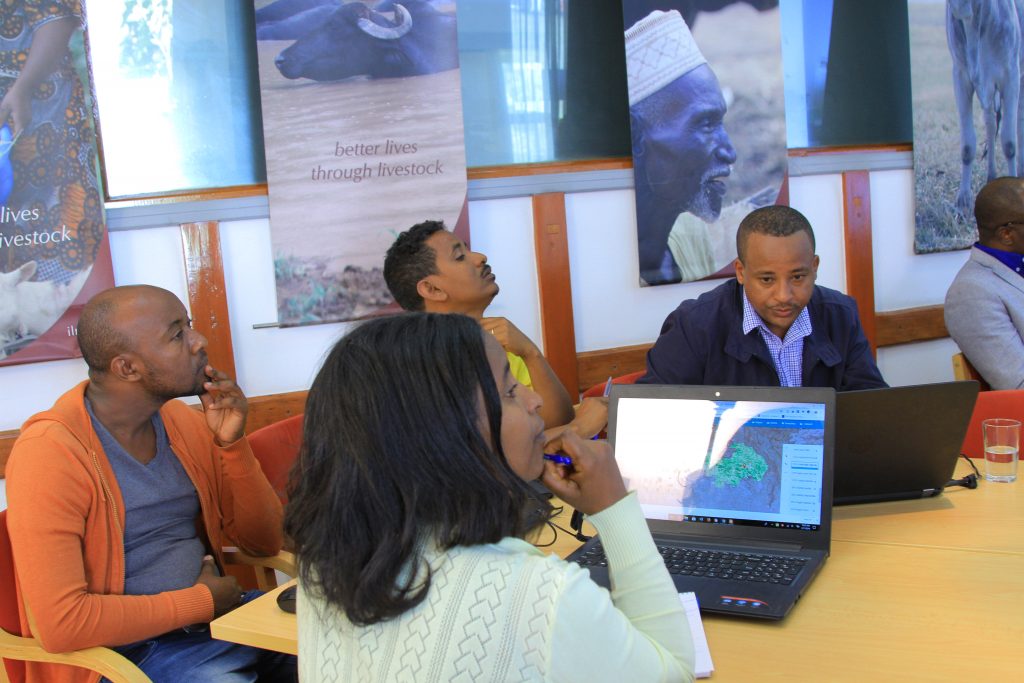Earth Observation data can provide substantial benefits for development initiatives all over the globe. In fact, the use of Earth Observation data can optimise different stages of agricultural and rural development project cycles, i.e. planning, preparation, implementation, monitoring and evaluation. The value of having practical knowledge of the domain of Earth Observation (EO) and Geographical Information Systems (GIS) is, therefore, incalculable.
When the Agriculture and Rural Development Cluster project of the European Space Agency’s Earth Observation for Sustainable Development(EO4SD) initiative launched in 2016, it developed a strategy for supporting the development initiatives in African countries. This strategy included the organisation of a series of capacity building workshops and training of task team leaders who would then further disseminate the hands-on knowledge of the EO to be applied for agricultural and rural development project optimisation in their regions.
Accordingly, within the framework of this EO4SD initiative, a first series of workshops were organised in countries such as Ethiopia, Morocco, Bolivia and Cambodia. These 5-day workshops successfully increased the awareness of capabilities EO has to offer in support for agricultural and rural development projects in Africa. Representatives of the EO4SD Agriculture and Rural Development Cluster also used the workshops as an opportunity to discuss face-to-face the requirements of those who are actively involved in the implementation projects and programmes on rural and agricultural development.
After successful collaboration and concrete results developed from the first season of the capacity building workshops, the second season was ready to be kicked off. On 11-15 February 2019, the seasons’ first workshop took place in Addis Ababa (Ethiopia) at the International Livestock Research Institute (ILRI) campus. By focusing on knowledge and insights gained during the first workshop series, this workshop combined theory and practice: the knowledge on EO and GIS concepts was deepened, EO use cases of the European industry were presented and EO tools using state of the art open source software were demonstrated. The hands-on exercises, which are an essential part of the capacity building workshops, generated intensive and fruitful discussions amongst the participants. Also, the project leads of four ongoing development projects in Ethiopia took the floor to present their initiatives, data collection procedures and EO4SD services during the past year. Active participation and feedback received from the participants is at the core of these workshops.

There are a few take-aways from this workshop. First of all, it became clear that participants are primarily focused on individual capacity building to then further invest their knowledge into efficient and goal-oriented team work. Secondly, the participants were eager to learn more about EO, especially when it comes to practical skills such as EO data processing and EO product generation. An introductory session on institutional information management was also well received. Additionally, it became clear that there is a need for a dedicated presentation on the results of the EO4SD Agriculture and Rural Development Cluster to be delivered to the delegates of the national parliament in Ethiopia, as this is the primary decision-making body on investments made into the provision of satellite-based information in the country.
“Earth Observation is not an easy topic to learn. However, as our workshop participants are already well aware of the benefits that space technologies can offer for agriculture and rural development, they learn very quickly and efficiently.” – says Parya Pasha from ITC, University of Twente (an EO4SD project partner).
“A lot of effort is being put into the development of Earth Observation technologies. It is wonderful that the results of these efforts are disseminated globally, e.g. in Africa, through our capacity building workshops. The information and skills the workshop participants acquire will be further used for efficient agriculture and rural development – a sustainable use of knowledge!” – adds Lucas de Oto (ITC).
EO4SD has built partnerships with IFAD-funded programmes across Africa, including the Participatory Small-Scale Irrigation Programme II (PASDIP II) in Ethiopia and the regional GEF- funded Integrated Approach Programme on fostering sustainability and resilience for food security in Sub-Saharan Africa (IAP-FS), the latter with a strong partnership at regional level.
Annemarie Klaasse, from eLEAF (EO4SD project’s lead organisation) stressed that “it is amazing to see how our Ethiopian counterparts have integrated geospatial data into their workflow since we started collaborating within EO4SD. At the start of the project, linking the satellite information services to the project interventions was one of the key challenges we encountered. But since then, the PASIDP II team has mapped the watersheds and the irrigation schemes they are working in and has collected ground data on land cover to conduct image interpretation and supervised classification”.
Silvia Huber, from DHI GRAS (an EO4SD project partner), said: “I was very happy to see how the EO4SD engagement of the last two years inspired the Ethiopian stakeholders to integrate EO-based data and information into their projects. For instance UNDP, the implementing agency of the GEF IAP Food Security project in Ethiopia, decided to integrate information from satellites into their monitoring system after being involved in EO4SD ”.
A road map for future provision of the services will be drafted together with the team leaders to identify the steps to ensure EO and GIS technology uptake. The results achieved within the EO4SD programme through the common effort is a solid base for future initiatives to further develop initiatives aimed at prosperity of agricultural and rural development. The relationship and trust established among the programme’s counterparts are a strong factor for the efficiency of the future initiatives.





Discussion: no comments